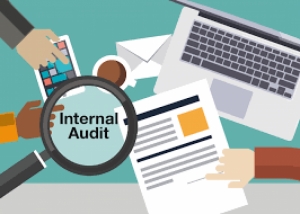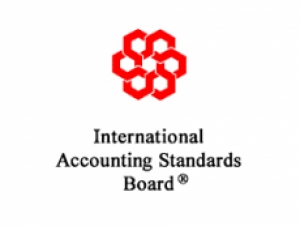عرض العناصر حسب علامة : محاسبة و مراجعة
الأحد, 27 أكتوبر 2019 14:10
حل النزاعات في التخطيط المالي
معلومات إضافية
-
المحتوى بالإنجليزية
Conflict resolution in financial planning
There are many firms that haven’t yet established a personal financial planning department, citing various reasons for lack of progress in this area. Some are focused on other niche specialties, some are too busy and can’t staff their traditional business properly, and some feel that the wealth management business represents a conflict of interest that they’d rather not deal with.
There are two types of conflicts: ethical and regulatory conflicts, and practice management conflicts.
The first is the stereotype that financial planning itself is a conflict of interest. The process of financial planning shouldn’t be too different from any other accounting engagement. Competent PFP firms use guides, similar to those used in audits, to offer some quality control to be sure that the financial planning process is consistent, comprehensive and supervised from client to client. The process itself can also be priced similar to traditional accounting firm engagements — hourly or flat fees. This isn’t a conflict, so get over it.
Where conflict may appear to rise is when the CPA is involved with some of the implementation services required after the delivery of financial advice. These conflicts may occur with respect to estate planning, asset management, insurance purchases, etc. The giving of advice that a client needs to get professional investment help, hire an attorney to draft documents or buy life insurance itself isn’t a conflict. It’s the later sale and the corresponding compensation that causes the conflict — and I agree that this is a conflict. It is a conflict if you sell the services or products yourself and it is a conflict if you refer it to another professional where revenue sharing may be present.
The way to address this conflict, to the extent that you want to perform the implementation services, is through disclosure: clear, conspicuous disclosure of the conflict, including the nature, frequency and amount of any compensation received by you or your firm is appropriate and sufficient.
A conflict of interest, however, is not solely identified by a sharing of revenue or a direct commission or referral fee received by the PFP practitioner. A conflict of interest can develop if you refer every single client to the same professional in exchange for some soft-dollar arrangement or a quid pro quo relationship. The CPA financial planner must exercise diligence with respect to outside firms and be sure that their recommendation to another professional is appropriate and as good a recommendation as could be made. This doesn’t mean that you need to give out three names, but it does mean that you should vet your subject matter expert to be sure that your client can continue to get independent and objective advice.
For example, if your life insurance professional is a career agent with a large, reputable company, you need to be sure that your clients are getting fair representation to all products available to them, not just those offered by the proprietary life insurance company agent. I understand that the agent is able to use other companies (if needed), but in my fiduciary world that is not enough. I know that proprietary agents almost always lead with their proprietary company and only go elsewhere if they can’t get what they need from their proprietary company. They do not routinely show you or the client the several companies that they have researched to arrive at the conclusion that insurance company X is the best choice for your client.
Even further pain can come if there is a problem with the agent or the product down the road. A regulator may easily conclude that your PFP responsibility is to oversee the implementation phase as a part of your standard of care. That would mean that you should review the alternatives, understand and agree with the final decision and then inspect what was actually issued to see how it compares to what was illustrated. I would also suggest in-force illustrations for permanent life policies on a regular basis, no less than every other year.
If you’d like to be sure that your proprietary life insurance professional is giving your clients the right advice, ask a few questions.
First, and maybe even before you start the relationship, ask them if they can you show you a breakdown of commissions each year for the past three from each company they represent. Can you show me your analysis of other company products with respect to my client? Do you have a documentation on why company X was the best choice?
Insurance isn’t the only area where a conflict may arise with an outside firm. In the investment world, many accountants are attracted to the largest brand names in the asset management business. In general, I would say that these firms are generally very competent and able to do the job. But did you compare them to their peers? Do you really know if the large-bank private client group uses their investment management processes alone or do they also use sub-advisors for specialty areas? Is the person who your client interacts with able to have any influence, or are they just a relationship manager who phases out every few years or so? In my opinion, this conflict is less egregious than when dealing with insurance products with large commissions and surrender fees. Nevertheless, if you’re maintaining an ongoing financial planning relationship with the client, your duties would include the supervision of the asset manager, benchmarking them to their peer groups and awareness of your alternatives.
In short, an introduction to any one firm to assist with the financial planning process, whether it is planning or implementation, isn’t itself a bad thing. Be fully aware however, that if you are engaged as your client’s personal financial planner, you would ultimately be the “buck stops here” person for another professional who deviates from the advice or simply doesn’t do a good job under your watch.
Internal conflicts
Practice management conflicts also exist within CPA PFP practices. The first could be about the quality of engagements. Many CPAs are conditioned to move fast, hoping to keep the hours down so that the net realization rate is maximized. Simply said, you cannot short-cut the process. If you chose to work for a fixed, flat fee, your staff must do what is needed to produce the best result and not to keep their efforts constrained within the time budget that you’ve established for this project. Over time, your engagements will become more efficient and profitable, like other flat fee services, but it may require more scale and experience to get there.
Another practice management conflict is how to deal with the clients who already have a team of advisors, some of whom may even have been referred in by you. This may fall under the category of a moral dilemma rather than a conflict of interest, but I know that this issue keeps CPAs awake at night.
First, your obligation is to your client. To that end, all of your clients may be prospects for your PFP offering. However, to honor your moral obligation to outside professionals with whom you’ve enjoyed a long-term relationship, perhaps these folks may not become your PFP clients until they want to move from the prior.
That said, once you get good at PFP services, you’ll quickly spot gaps in a client’s financial life just by paying attention when doing tax work. To the extent that you see a gap in the plan, such as improper titling of an account, old estate documents, or other matters that are easily identified, you need to decide if these are isolated issues or systemic flaws in the service model of your former referral partner. Remember, most planners give lip service to the details of financial planning and are satisfied if they have recurring asset management revenue or commissions. In this case, I don’t think that you are breaching your moral agreement if you offered PFP services to that client where you’ve observed a need. In this case, you aren’t advising that the client leave the person that you’ve referred in the past; you are simply picking up to fill in the gaps that have been ignored or created in the course of your client’s relationship with outside advisors.
As you may already know, I am an advocate of putting a CPA firm’s PFP services out there as a core part of their offering. Many fear this moment primarily from the reaction that they may receive from outside centers of influence who have referred clients to the firm. Unfortunately, this is another harsh reality that you simply must get over. The best way to handle it is to have a face-to-face with the affected professionals to let them know that your referrals may slow going forward. At that time, you may also let them know that it is not your intent to disrupt their existing relationships with your firm’s clients. The outcomes from this conversation will vary. Some will be upset, some will understand and say they wondered when you’d step in, and some may be bold enough to understand the distinction between your offerings and figure out how to collaborate into the future.
نشر في
محاسبة و مراجعة
موسومة تحت
الأحد, 27 أكتوبر 2019 09:08
جعل الشركات الخاصة جاهزة لمعيار الإيرادات الجديد
معلومات إضافية
-
المحتوى بالإنجليزية
Get private companies ready for the new revenue standard
Auditors of private companies are reviewing clients’ efforts to prepare for filing financial statements under the new revenue recognition standard in early 2020.
In the five years since FASB adopted its landmark guidance in Accounting Standards Update No. 2014-09, Revenue From Contracts With Customers (Topic 606), companies large and small have had to race to implement the standard by its effective date.
Public companies began complying with the standard with their regulatory filings for the first quarter of 2018. Now the focus has shifted to private companies, which, in little more than half a year, are going to prepare their first set of annual financial statements with the new standard. Private company financial statements for interim reporting periods will have to comply with the standard in 2021.
In some cases the new standard may not affect companies’ reported revenue. But even private companies that don’t have a significant change to the top line of their income statements will have to satisfy additional requirements for footnote disclosures. The new standard also requires an increase in the use of estimates that will require documentation of the judgments used by the client’s management. Here are some items auditors can use as a checklist to help them gauge how well clients are preparing for the new standard’s requirements.
Assess how well the client is prepared to implement the standard. In many cases, engagement teams from BDO USA LLP are meeting or have already met with clients’ executives, said Michael Stevenson, CPA, the national practice leader for the firm’s accounting and reporting advisory services group in Dallas. The engagement teams are evaluating how well clients sized up their sources of revenue and the processes they use to execute customer contracts and enter them into the financial reporting system.
“The first step in the process is just helping management identify that there’s a call to action here that is different in the past,” Stevenson said. “There are a good number of private companies who have really looked at this as an opportunity to evaluate the business, how they interact with their customers, and how they set terms and conditions within their contracts, and they’ve put themselves in a really good spot as far as the adoption goes.”
Make sure the client is ready to follow FASB ASC Topic 606’s five-step process. The standard’s five-step process requires companies to identify the contract with the customer, identify the performance obligations in the contract, determine the transaction price, allocate the price to the performance obligations, and recognize revenue when a performance obligation is satisfied.
“They really should start their thinking from the beginning. … Who are the customers? Let’s look at the contracts,” said Douglas Reynolds, CPA, a partner in Grant Thornton LLP’s accounting principles group in Boston. “The unit of account is the contract. Then try to figure out what we promised the customer, then the price, then we allocate it to the things we’re providing, and then we figure out, when do we recognize the revenue.”
Help clients understand the new standard’s documentation requirements. For many companies, the reported revenue won’t change once they’ve completed the transition to Topic 606. But clients will have to produce more documentation to support their decisions about reported revenue.
“That’s frustrating because people are trying to run a business,” Reynolds said. Most private companies lack large staffs in their accounting policy departments and can’t do the necessary research. The time that management has to spend producing the documentation takes them away from running the business.
Are the notes to the client’s financial statements in order? The new disclosures that are required to explain the changes to comply with the new standard will take time to prepare, Reynolds said. He advised private companies that compete with public companies to review the disclosures in the regulatory filings of their competition and glean from them how the disclosures should be handled.
“Even if they don’t feel that the monetary or the numerical change is significant, if any, there’ll be some new note disclosures that we’ll need them to have a handle on, too,” said Richard Reisig, CPA, a shareholder and director in attest services at Anderson ZurMuehlen & Company PC in Great Falls, Mont. Reisig also is a member of FASB’s Private Company Council.
Continue meeting with clients and evaluating their progress. Reisig said auditors should review clients’ sources of revenue and determine if the timing in which it is recognized will change with Topic 606. The timing of the recognition is determined by the transfer of control of the good or service, and auditors and clients will have to determine which revenue streams are recognized at a point in time and which are recognized over time.
“Even if you don’t think it affects you a lot, we’re going to need this information from you, so let’s start gathering that now,” Reisig said.
Grant Thornton’s Reynolds said that with little more than six months to go before the end of the year, auditors will need to push clients to ensure that they can prepare financial statements that adhere to the new U.S. GAAP requirements. If for some reason they won’t be able to comply with the standard, the sooner they know about the nonconformance with GAAP, the more time they have to address it.
“I don’t think a company would want to call a bank in January 2020 and say, ‘We just figured out that when we get done closing the books, we might need a waiver,’” Reynolds said. “They need to know what’s going to happen before the period’s over to work with their lenders.”
نشر في
محاسبة و مراجعة
موسومة تحت
الخميس, 24 أكتوبر 2019 19:42
اتحاد المحاسبين والمراجعين العرب يناقش «التحول الرقمي» السبت المقبل
تستضيف القاهرة ، يوم السبت المقبل ، أعمال المؤتمر المهني لاتحاد المحاسبين والمراجعين العرب في دورته العاشرة، تحت شعار التحول الرقمي و تطبيق المعايير الدولية للتقارير المالية.
نشر في
تكنولوجيا المعلومات
موسومة تحت
الخميس, 24 أكتوبر 2019 11:52
ثغرات التقييم في الشركات التي تم الإبلاغ عنها للحصول على المشورة المالية
معلومات إضافية
-
المحتوى بالإنجليزية
Valuation gaps in firms flagged for financial advice
According to Radar Results principal John Birt, traditionally the difference in the multiple paid for a high-quality advice practice and a more conventional advice practice is approximately 0.5 times the recurring revenue.
In the current environment, conventional practices are going on the market for anywhere between 1.5 times and 1 times the recurring revenue. Further, the grandfathered clients are selling for between 0.5 times and 1 times, according to Radar Results.
“Therefore, the difference today between the valuation of a high-quality financial planning practice compared to a conventional one is possibly up to 1.5 times the RR; before 2018, it would have been 0.5 times the recurring revenue,” Mr Birt said.
“High-quality practice valuations haven’t really changed and there’s a higher demand now than at any time before.”
What does a 'quality' advice practice mean?
A quality advice practice, according to Radar Results, would have all clients having an annual fee level of between $3,000 to $8,000, and each adviser would manage approximately 100 clients located in a capital city.
In addition, the clients would all be fee-for-service with no grandfathered trail commission clients.
On the other hand, a conventional advice practice would have many clients compared with the number of advisers, possibly one adviser and 1,000 clients with 300 clients considered active, with the clients geographically spread across a large area.
Market moves
A significant consideration for practices old and new are the incoming mandatory education requirements for professionals operating under an AFSL, limited or otherwise. This includes accountants. You can read more about this here.
The outcomes of the royal commission will also have a direct impact on the way financial advice practices are run, particularly those which are part of bank-aligned licences. This impact won't be directly felt by firms which have accounting services at its core, however, there are some considerations for multi-services practices.
نشر في
محاسبة و مراجعة
موسومة تحت
الأربعاء, 23 أكتوبر 2019 09:43
تعلن شركة كي بي أم جي عن بنية تدقيق و مراجعة جديدة - لكن هل هذا يكفي؟
معلومات إضافية
-
المحتوى بالإنجليزية
KPMG UK announce new audit structure – but is it enough?
KPMG UK will change their executive governance structure to separate audit from the rest of the business – but critics have said the changes do not go far enough.
The changes will see KPMG create an Audit Executive Committee in attempt to deliver on some of the recommendations made by the CMA and BEIS committee, but they do not represent a full separation of the firm’s audit practice from the rest of the business.
Campaigner professor Richard Murphy, from City University, was sceptical about the proposed restructuring and called for KPMG to “entirely separate its audit firm from the rest of its activities.”
“I welcome KPMG recognising that there is an issue to address with regard to audit independence. I regret that they are addressing it the wrong way. There is no way that any number of so-called Chinese walls will restore any credibility to the Big Four on this issue,” he said.
KPMG UK chairman Bill Michael insisted that the firm was committed to reform. “We’re serious about making changes to restore trust in audit. We understand concerns that the profession’s operating models have become too opaque and we are taking action to tackle these.”
The Audit Executive Committee will be headed by Jon Holt, who will become head of audit. The restructuring is intended to enable faster management decisions to be made by those closest to the firm’s clients.
“The sole aim and focus of our chair of audit, our new audit executive and our Audit Oversight Committee is to drive audit quality, via strong leadership, good governance, rigorous controls, independent decision-making and separate performance management from the rest of the firm,” he added.
However, Prof. Murphy refused to believe that KPMG could be trusted to regulate themselves adequately. “When it is apparent that they cannot comply with existing externally imposed audit regulations, no one will believe that they will respect those that they claim that they will voluntarily apply to themselves to save their own corporate skin.”
نشر في
محاسبة و مراجعة
موسومة تحت
الثلاثاء, 22 أكتوبر 2019 09:09
تسعة من أصل عشر شركات محاسبة معنية بتقديم زيادة طفيفة في الأجور
معلومات إضافية
-
المحتوى بالإنجليزية
9 in 10 accounting firms set to deliver a minor pay rise
According to the FY2019–20 Hays Salary Guide released today, and based on a survey of more than 3,400 organisations, 90 per cent of employers will increase their accountancy staff salaries in their next review, up from 87 per cent who did so in their last review.
However, 65 per cent of employers were looking to raises salaries at just 3 per cent or less, with only 4 per cent of employers intending to grant rises of more than 6 per cent.
“Within professional practice, and despite continuously high demand, firms are not increasing salaries above CPI. With clients looking to keep accounting fees down, firms are unable to offer strong salary increases to their staff. The rare exceptions occur for the highest performers,” said David Cawley, regional director of Hays Accountancy & Finance.
“Evidently, the aggregate effect of several years of sedate salary increases is taking its toll and we’re now seeing a tug of war over salaries.
“On the one hand, we have professionals telling us they’ve prioritised a pay rise and are prepared to enter the job market to improve their earnings. On the other, employers tell us they want to add to their headcount and are being impacted by skill shortages, yet they plan to curtail salary increases.”
According to Mr Cawley, accountants are now negotiating flexible working hours or work-from-home options in lieu of a strong salary increase.
Supply and demand
Despite the low salary increases, 32 per cent of employers intend to increase permanent accountancy and finance staff levels over the coming year, with just 10 per cent who are indicating they will decrease staff levels.
Further, 68 per cent of employers said business activity had increased over the past year, with 70 per cent expecting it to increase in the next 12 months.
Qualified accountants with a big four or mid-tier background who are already in a commercial role and looking for their next opportunity continue to be among those highly sought-after.
Within professional practice, internal and external audit, tax and business services candidates with experience working for a reputable local firm remain in short supply.
Mr Cawley also said he is seeing a demand for management accountants with strong reporting, analytical and business partnering skills, and financial accountants who can maintain financial control.
نشر في
محاسبة و مراجعة
موسومة تحت
الإثنين, 21 أكتوبر 2019 11:33
تحسينات مجلس معايير المراجعة والضمان الدولي لإدارة الجودة
نشر في
محاسبة و مراجعة
موسومة تحت
الإثنين, 21 أكتوبر 2019 10:13
تحديث مجلس معايير المحاسبة الدولية مارس 2019
نشر في
محاسبة و مراجعة
موسومة تحت










